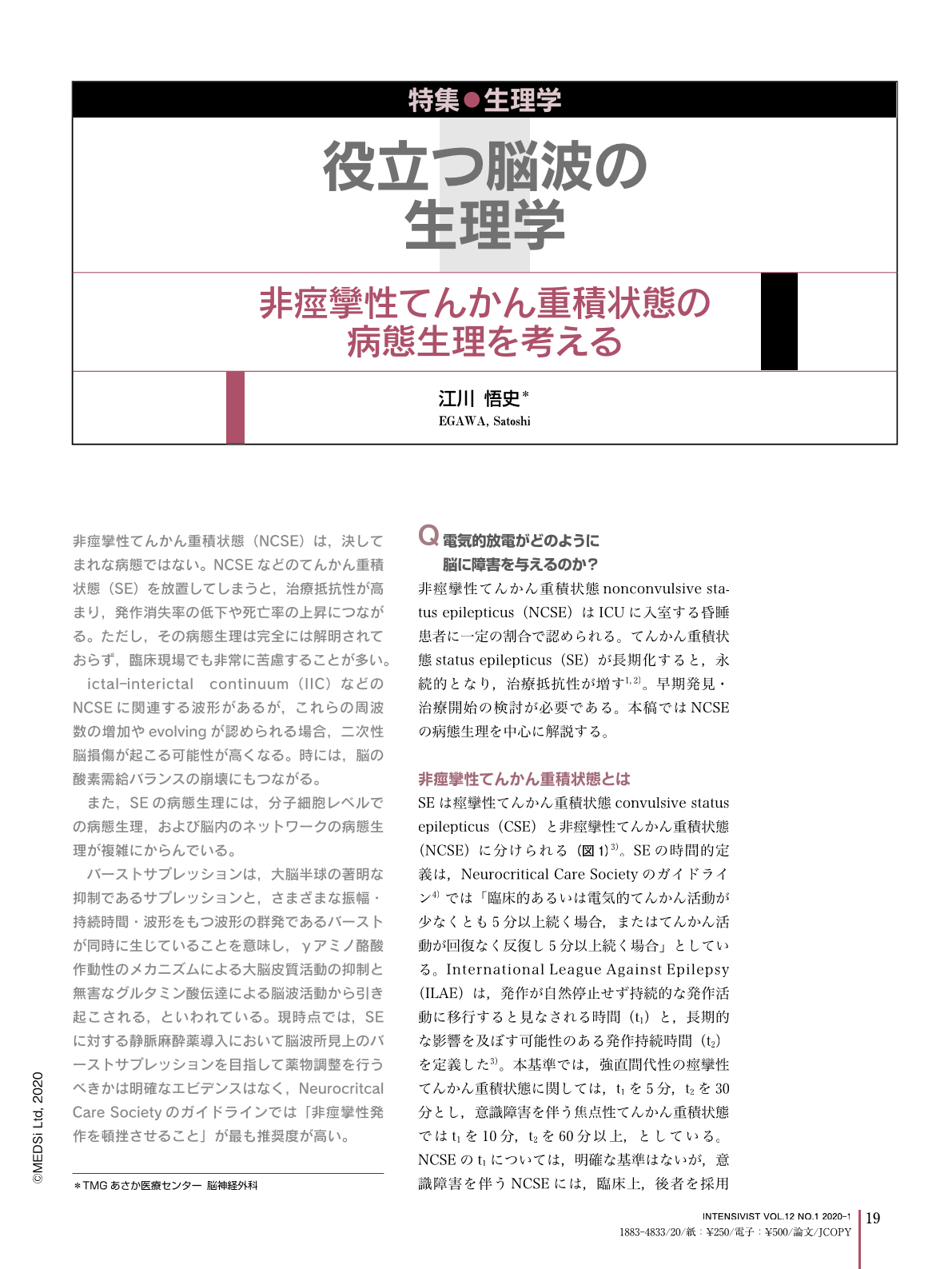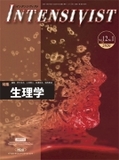Japanese
English
- 有料閲覧
- Abstract 文献概要
- 1ページ目 Look Inside
- 参考文献 Reference
非痙攣性てんかん重積状態(NCSE)は,決してまれな病態ではない。NCSEなどのてんかん重積状態(SE)を放置してしまうと,治療抵抗性が高まり,発作消失率の低下や死亡率の上昇につながる。ただし,その病態生理は完全には解明されておらず,臨床現場でも非常に苦慮することが多い。
ictal-interictal continuum(IIC)などのNCSEに関連する波形があるが,これらの周波数の増加やevolvingが認められる場合,二次性脳損傷が起こる可能性が高くなる。時には,脳の酸素需給バランスの崩壊にもつながる。
また,SEの病態生理には,分子細胞レベルでの病態生理,および脳内のネットワークの病態生理が複雑にからんでいる。
バーストサプレッションは,大脳半球の著明な抑制であるサプレッションと,さまざまな振幅・持続時間・波形をもつ波形の群発であるバーストが同時に生じていることを意味し,γアミノ酪酸作動性のメカニズムによる大脳皮質活動の抑制と無害なグルタミン酸伝逹による脳波活動から引き起こされる,といわれている。現時点では,SEに対する静脈麻酔薬導入において脳波所見上のバーストサプレッションを目指して薬物調整を行うべきかは明確なエビデンスはなく,Neurocritcal Care Societyのガイドラインでは「非痙攣性発作を頓挫させること」が最も推奨度が高い。
NCSE (nonconvulsive status epilepticus) is not a rare condition. If SE (status epilepticus) is untreated, resistance to anti-seizure medications increases, leading to high mortality. However, the pathophysiology of this problem has not been fully elucidated. IIC (Ictal-Interictal Continuum), are well known waveforms which may be related to NCSE. An increase in the occurrence of these waveforms may be associated with secondary brain injury. This can lead to a breakdown of the oxygen supply-demand balance in the brain. In addition, SE has a complex pathophysiology at the molecular cell level and at the level of the network in the brain. The concept of “burst suppression” is well known. Suppression means significant suppression of cerebral activities. Burst means a cluster of waveforms with various amplitudes, durations, and waveforms. This condition results from suppression of cortical activity via GABA-ergic mechanisms with breakthrough EEG activity due to intact glutaminergic transmission. At present, we have no clear evidence as to whether we should adjust sedative drugs for burst suppression based on EEG findings. The most recommended goal for EEG in the guideline is to suppress “nonconvulsive” seizure activity.

Copyright © 2020, MEDICAL SCIENCES INTERNATIONAL, LTD. All rights reserved.


